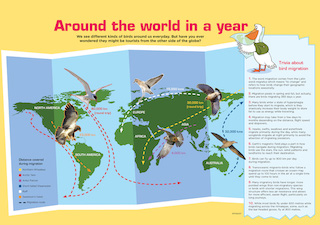The Convention on Biological Diversity, 20 years on, is still struggling to stem the precipitous decline in biodiversity. After missing the 2010 target of reducing biodiversity loss, it is now pulling out all stops to meet the Aichi Targets, named after the Japanese prefecture where new goals for protection were set two years ago. As time runs out to protect the world’s ‘natural capital’, the forthcoming CBD conference in Hyderabad [CoP-11] will discuss innovative ways of financing biodiversity from partnerships with business to payments for ecosystem services. […]
However, the underlying problem is that the Aichi Targets are politically difficult because the danger of biodiversity loss seems distant and there are always more pressing developmental concerns that push conservation to the background, leading to the risk of reaching tipping points. The CBD secretariat’s document for CoP-11 warns of this danger.
“Biodiversity loss seems distant and can be crowded out by more pressing concerns. It is, therefore, important to highlight the expected benefits associated with the implementation of the Aichi Targets, including sustainable development and poverty reduction benefits.” […]
Africa may be losing more than $15 billion from the piracy of its biodiversity as agricultural products, cosmetics, drugs and traditional knowledge are being patented by multinationals with no benefits going to local communities. So says the National Indigenous Knowledge System Office of South Africa. The best known case relates to Nestle subsidiary Nestec’s claim for five patents on using rooibos and honeybush plant extracts. […]
The Aichi Targets are aimed at addressing the underlying causes of biodiversity loss, reducing the direct pressure on it and improving the status by safeguarding ecosystems, species and genetic diversity. […]
2020 … TARGET 18
Integrate traditional knowledge and practices of indigenous and local communities relevant for conservation of biodiversity in implementation of the Convention […]
The emphasis at the 10-day congress was on saving ‘natural capital’ with some speakers emphasising that there is a price to be paid for using nature’s bounty. […]
Will CoP-11 agree to make biodiversity a subsidiary of the economy? Will it help to strengthen the web of life on the planet? We need to wait for the outcome.
Source: Taking stock of biodiversity by Latha Jishnu, Down to Earth, 15 October 2012
Address : http://www.downtoearth.org.in/content/taking-stock-biodiversity
Date Visited: Tue Oct 30 2012 11:11:05 GMT+0100 (CET)
[Bold typeface added above for emphasis]

Mongabay-India contributors >>
Mongabay-India is a nonprofit environment and conservation news platform that brings high-quality, original reports from nature’s frontline in India. We look at India’s development through the prism of environment and conservation >>
“From transforming barren lands into forests, to practicing planet-friendly organic farming in the backyards, the permaculture movement is led by youngsters who believe in reconnecting with the ancient roots and re-establishing a connect with nature.” – Babli Yadav (Mongabay-India) in India’s permaculture movement is being taken forward by young people >>
More about Biodiversity | Economy and development | Health and nutrition | Success stories | Women >>
For additional learning resources visit the website of the Centre for Science and Environment (CSE), “a public interest research and advocacy organisation based in New Delhi”:
Communication for Awareness
CSE’s publications and informational products have been its strength and they have always combined research and readability to get the message across.

CSE’s tools for awareness raising are periodicals, publications, films/short spots, briefing papers, exhibitions, posters and other products. CSE’s informational products reach people in more diverse ways such as features service, website and e-news bulletins. […]
Source: About CSE
URL: https://www.cseindia.org
Date Visited: 10 July 2022
See also
Adverse inclusion | Casteism | Rural poverty
Childhood | Tribal Children’s Right to Education in India
Demographic Status of Scheduled Tribe Population of India (Census figures 2011)
Fact checking | Figures, census and other statistics
Human Rights Commission (posts) | www.nhrc.nic.in (Government of India)
Search tips | Names of tribal communities, regions and states of India
“What is the Forest Rights Act about?” – Campaign for Survival and Dignity
“Who are Scheduled Tribes?” – Government of India (National Commission for Scheduled Tribes, NCST)